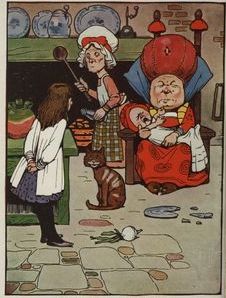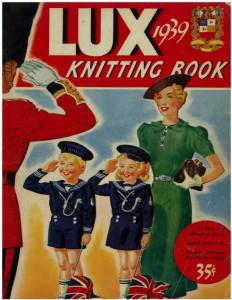The federal Consumer Product Safety Commission has been seized by a passing fit of sense on a question of regulatory stringency, and the result could be to save makers of harmless apparel and footwear as much as $250 million a year [Nancy Nord]
Posts Tagged ‘CPSIA and apparel/needle trades’
November 26 roundup
- Car dealers sue Tesla for selling direct to customers [NPR via @petewarden]
- Had the measure been “fatalities per 100,000 miles driven above urban speeds” this story might have been a good bit less “amazing” [Fair Warning]
- No GOPers want to take away anyone’s contraception? Maybe Sen.-elect Cruz means no elected GOP officials [my new Secular Right post]
- Trial lawyers, FDA, New York Times continue hot on trail of caffeinated energy drinks [Jacob Sullum, Abnormal Use, earlier]
- Lawsuit aims to strike down SEC’s resource extraction disclosure rules [Prof. Bainbridge]
- Quebec language muscle: “After series of fire-bombings, Second Cup coffee shops added the words ‘les cafes’ to signs” [Canadian Press]
- The CPSIA effect, cont’d: more makers of kids’ apparel drop out rather than cope with CPSC rules [Nancy Nord] More: Katherine Mangu-Ward, Reason.
Charity blue-jean donation program
It’s endangered by CPSIA, since organizers have no easy way to know whether a recyclable pair of kids’ jeans might have lead-containing brass in its buttons or zipper and thus be unlawful to sell (though not in fact dangerous). [Nancy Nord]
P.S.: Demise of print publication of Mothering Magazine after 35 years attributed in part to CPSIA and other CPSC regulations that devastated many advertisers [Handmade Toy Alliance]
Capsized by CPSIA
Dallas entrepreneur Phebe Phillips tells in this speech (PDF) why she had to get out of her successful plush animal business:
Then in 2008 and 2009 the U.S. economy tanked … retail dwindled and a new toy regulation was enacted in response to the poor quality and mass quantity oversights by some really big toy companies.
This new law raises the testing price for each product and in some cases, doubles or triples the costs. For some small companies, it can cost one year of total revenue just to meet the requirements of this law. The law is for any product marketed to a child age twelve and under and for any product made anywhere…even here. It has frozen many small and midsize companies leaving the companies that caused the problems in the first place as some of the only companies that can afford to stay in business. Financially, it caused me to temporarily halt my business…I changed!
Via Amend the CPSIA, which had this report on Phillips in December; earlier on CPSIA and stuffed animals here and here.
Consumer Product Safety Commission member Anne Northup has also been blogging about some of the law’s ongoing damaging effects on sellers of dolls, kids’ furniture and apparel imports.
PUBLIC DOMAIN IMAGE from Honor C. Appleton, The Bad Mrs. Ginger (Frederick A. Stokes Co., 1902), courtesy ChildrensLibrary.org.
Congress vs. rhinestones
 Amid increased chatter about finally getting some legislative fixes made to the horrendous CPSIA, the Democrats seem insistent that crystals and like embellishments must remain banned on children’s products, though (says Rick Woldenberg) they “have no history of causing lead poisoning.” Earlier here, here, here, etc. Related: Jennifer Taggart [belt buckle on Disney Princess pants]; Amend the CPSIA [hair bow maker left with thousands in unsalable inventory]
Amid increased chatter about finally getting some legislative fixes made to the horrendous CPSIA, the Democrats seem insistent that crystals and like embellishments must remain banned on children’s products, though (says Rick Woldenberg) they “have no history of causing lead poisoning.” Earlier here, here, here, etc. Related: Jennifer Taggart [belt buckle on Disney Princess pants]; Amend the CPSIA [hair bow maker left with thousands in unsalable inventory]
CPSIA and the needle arts
Overlooked from a couple of months back:
The National NeedleArts Association (TNNA) recently sent a letter to members about how the U.S. Consumer Protection Safety Improvement Act (CPSIA) of October 2009 directly affects how the needlework and crafts industries sell their goods, particularly to children.
“We cannot suddenly say that our products are ‘not for use by children 12 and under’ and still try to teach children to knit, crochet, needlepoint and cross stitch,” states the letter, which was sent by TNNA’s five-member CPSIA committee. “We can’t say children 12 and under are only allowed to use certain tools but not others and still expect them to take needlearts seriously. We must involve ourselves and our businesses in the effort to amend this poorly written, misguided legislation and keep it from destroying our businesses.”
The CPSC has promulgated exemptions for simple textiles and some other materials, which has certainly been better than nothing, but many other innocuous tools and materials used in needle crafting must be either kept off limits to younger crafters or put through onerous testing regimens. [Positive Yarn]
Making hair bows in west Michigan
A nice way to support a family, but it’s sure too bad about CPSIA. And a Columbus, Ohio stay-at-home mom trained as an artist is afraid the law’s testing costs will sink her small-batch online business making bibs, burp clothes, blankets and similar baby items. [Business First of Columbus]
P.S. Be warned: the Grand Haven, Mich. report contains an error regarding the law’s coverage of secondhand stores (h/t reader Panthan in comments).
“Birth Defect Study Casts Doubt on Phthalate Fears”
What, you mean the phthalate provisions in CPSIA might have been an overreaction? [Scientific American, July]
More: “Why It’s Impacting Textile Screen Printing” [Ed Branigan, International Coatings Blog]
The state of CPSIA
On the craft site Etsy, Cecilia Leibovitz of the Handmade Toy Alliance provides an update on the present state of affairs, including component testing, rhinestone workarounds, and the CPSC’s exemption of ordinary fabric (but not many other constituents of sewn goods) from third party testing.
CPSIA developments; posting lull
I’ve got an out of town trip over the next few days, so posting from me is likely to consist of a relatively few scheduled short posts.
There have been several important developments with CPSIA over the past month, to which time has not yet permitted me to do justice. In particular, the CPSC late last month issued guidance on the tracking-label rules that take effect later this week. Its interpretation is more lenient on several issues than most observers were expecting, particularly for craft and small-batch producers, but the rules remain a gigantic headache for thousands of businesses.
Even more recently, the commission offered further guidance on a few other issues, notably its interpretation of what materials will be considered inherently free of lead under normal circumstances. These new rules are being cautiously welcomed as helpful to some in (for example) the apparel trade, but they are unfortunately bad news for friends of many other products, in particular vintage children’s books, which are not going to be considered intrinsically safe. Finally, the commission appears to be giving off some favorable signals on the issue of “component testing” (i.e., avoiding endless and costly re-testing of already-tested product components).
I hope to treat these new developments at more length in future posts. In the mean time, here are some relevant links:
Tracking labels: commission action and policy in PDF, Rick Woldenberg coverage, Kathleen Fasanella/Fashion Incubator, Buggalove, Play Meter (scroll to 7/27), Greco Woodcrafting, Publisher’s Weekly and earlier, Hugh Hewitt.
Intrinsically safe materials: CPSC final rule in PDF format, Rick Woldenberg and more, The Smart Mama.
The fate of vintage books: Deputy Headmistress and more, Rick Woldenberg, and — from back in the spring but not linked then — Assistant Village Idiot, Deputy Headmistress, Carter Wood, and Valerie Jacobsen as well as more.

